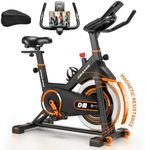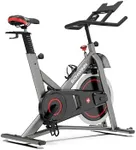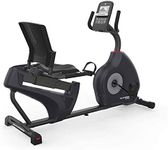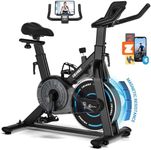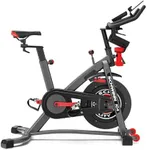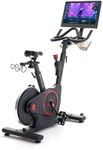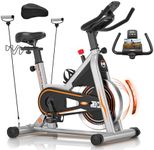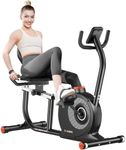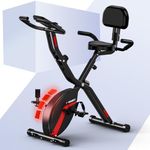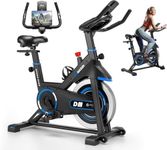Buying Guide for the Best Exercise Bikes
Choosing the right exercise bike can make a big difference in your fitness journey. The best approach is to think about your fitness goals, the space you have available, and how you plan to use the bike. Whether you want to improve your cardio, lose weight, or just stay active, understanding the main features of exercise bikes will help you find a model that fits your needs and keeps you motivated to use it regularly.Type of BikeExercise bikes come in three main types: upright, recumbent, and indoor cycling (sometimes called spin bikes). Upright bikes are similar to regular bicycles and are good for general fitness. Recumbent bikes have a larger seat and back support, making them comfortable and easy on the joints, which is great for people with back problems or those who want a more relaxed workout. Indoor cycling bikes are designed for intense workouts and mimic the feel of road cycling, making them ideal for people who want a challenging, high-intensity session. Think about your comfort, fitness level, and workout style to decide which type suits you best.
Resistance SystemThe resistance system controls how hard it is to pedal. There are usually two main types: magnetic and friction. Magnetic resistance is quieter, smoother, and requires less maintenance, making it a good choice for home use. Friction resistance is often found on more basic or budget-friendly bikes and can be noisier and require more upkeep. If you want a quiet, low-maintenance ride, magnetic resistance is usually better, but if you don’t mind a bit of noise and want a simpler mechanism, friction can work too.
AdjustabilityAdjustability refers to how much you can change the seat and handlebars to fit your body. A bike with good adjustability lets you set the seat height, seat position (forward/back), and sometimes handlebar height. This is important for comfort and to avoid injury. If you’re tall, short, or plan to share the bike with others, look for a model with lots of adjustment options so everyone can find a comfortable position.
Display and Tracking FeaturesMost exercise bikes have a display that shows information like speed, distance, time, calories burned, and sometimes heart rate. Some also offer workout programs or connect to apps for tracking progress. If you like to monitor your workouts or need motivation, look for a bike with a clear, easy-to-read display and the tracking features that matter to you. If you prefer a simple ride, a basic display may be enough.
Weight Capacity and StabilityWeight capacity tells you the maximum user weight the bike can safely support, and stability refers to how solid the bike feels during use. Heavier, sturdier bikes are usually more stable, especially during intense workouts. Check the weight limit to make sure it fits your needs, and if you plan on vigorous exercise, look for a bike with a solid frame and wide base for extra stability.
Size and PortabilityExercise bikes come in different sizes, and some are easier to move than others. If you have limited space or need to store the bike when not in use, look for a compact model or one with wheels for easy movement. Measure your available space before buying to ensure the bike will fit comfortably in your home.
Comfort FeaturesComfort features include things like seat padding, backrests, and handlebar grips. A comfortable seat and ergonomic design can make a big difference, especially if you plan to use the bike for longer sessions. If possible, try out different styles or read reviews to see which bikes are most comfortable for people with similar needs to yours.
